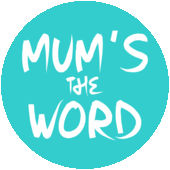
You have found my blog because you are googling “Birth Plan Template”.
You probably started off really enthusiastically and wondering:
“What should I put on my birth plan?”
But as your search continued, you may have become more and more confused by the myriad of Birth Plan Templates (most of which are actually American and they do things slightly differently over there).
You possibly don’t even understand half the things that are written on them.
You might also have started to wonder:
“Should I bother even writing a birth plan?”
Well, take a deep breath, relax and continue reading.
I am going to explain why I think a Birth Plan is a good idea.
Then I will give you a few tips on how to write your own Birth Plan without a Birth Plan Template.
Then finally, and really importantly, I will discuss what to do with your Birth Plan.
Why I Think Writing a Birth Plan is a Good Idea

As a young midwife “in the system”, I remember that the general thinking amongst midwives and doctors was; women who wrote a Birth Plan had the worst births. They thought that women were “setting themselves up to be disappointed”.
The most often advice given was to “be flexible”.
However, I have always liked Birth Plans.
So I was really pleased to come across this research (1).
The study split women into three groups:
1.‘Self-determiners’: women who had a clear picture of how they wanted their births to go.
2.‘Take it as it comes’: women how were going to be flexible and just see what happened on the day.
And 3. ‘Fearful’: women who didn’t want to know anything, didn’t even want to think about their birth.
The researchers then looked at how these groups birthed.
It was no surprise to me that the “Fearful” group were more likely to report a negative birth experience, and the “Self Determiners” had the lowest rates of intervention.
But what interested me was that the “Take it as it comes” women had similar poor outcomes to the “Fearful” group.

The author went on to comment on the “Take it as it comes” group, saying that they needed special attention from caregivers. These women were the most likely to have seemed like they have no issues during pregnancy, so they were actually doing as little preparation and research as the “Fearful” group.
The study concluded that:
“These women could benefit from clear information regarding the potential impacts of intervention on them and their baby, and should be encouraged to take a more proactive approach to giving birth and therefore be potentially positioned to avoid unnecessary intervention”(1).
So which group are you in?
This research backed up my belief that if you have a clear idea of what you want your birth to look like, and then take steps to ensure you get that birth, you are far more likely to have a better birthing experience.
And that woman who think they will just “be flexible”, actually end up just doing what they are told.
You can probably see why some doctors and midwives would prefer you to be in this group.
Another reason I think Birth Plans are really valuable is that not only do they make sure you and your care provider are on the same page, they also make sure you and your partner are on the same page.
The time you spend together writing a Birth Plan can be so important. It means your partner will understand exactly what sort of birth you want and why. It will empower him or her, to be a great advocate for you during your birth.

Tips on writing a Birth Plan
1. Call it a “Plan”
Some people will tell you to call it your “Birth Preferences” or “Birth Wish List”, because you can’t “plan” birth.
Well if you think about it, you can’t plan much in life, things often deviate. But that doesn’t mean we stop making plans.
When you go on a holiday you don’t just leave it up to the universe.
No, you Google for hours, look at your options, read reviews, make an itinerary, etc, etc.
But sometimes when you get to our destination and it’s not what you expected.
But you don’t just throw your hands up in the air and go home. No! You adapt, you look at your options again and make the most out of the situation you have.
I think obstetric services sometimes forget that women are adults and that they don’t need their expectations “managed”.
I have actually written a blog on this and why it is important to have positive expectations and not to be constantly worrying about what “might” go wrong.
2. Do Your Research
Make sure you are well educated and are making informed decisions.
Don’t just rely on what you are told in hospital antenatal classes. Remember they actually want you to just “Take it as it comes”.
It is really, really easy to educate yourself about birth and your options.
Because it isn’t brain surgery.
Make sure you chose a childbirth education programme that focuses on what you can do to achieve the birth you want. Not one that focuses on the doctors, midwives or hospitals policies (which I like to call “preferences” anyway).
You also have to make sure that you really understand everything you put on your Birth Plan. Because if your care provider wants to question your choices, you need to be able to discuss the reasons why you want it.
Remember “Knowledge is Power”.
3. Make it Personal
Don’t present someone else’s tick sheet.
Your Birth Plan is all about you.
It is not about your obstetrician, your midwife, your mum, your friend or some random person who has written a Birth Plan Template and put it on the internet.
It is about the birth you want for your baby and you.
So own it!
Think about your philosophy about birth and what you want to achieve.
Then look at the research you have done and add the things that are going to work for you.
4. Keep it Short and Sweet
To be really honest, most care providers won’t read a long essay from you.
I know they should, especially if you are paying them, but they just don’t.
So make it easy for them.
Dot points are great. Remember you have the knowledge to discuss these points at length if you need to.
Put the important points at the top.
Don’t get to caught up in trying to make your Birth Plan flow. Make sure your non-negotiables are at the top.
Also keep the language positive and respectful.
This is not about challenging your caregiver; after all, you are trying to build a really great relationship with them.
It is about making them aware of your choices, so they know how to best support you to get the birth you want.
5. Make a Plan B, C, D….
Sometimes things do deviate so you want to make sure your care provider, and you partner, know your wishes in any event.
This can also help you stop worrying about “What if things don’t go to plan?”
It can also show you that you have lots and lots of options, no matter what path your birth takes
I recommend starting with a Plan for: “If I go past my ‘due date’ ”.
What to do with your Birth Plan
Share it, share it, share it.
There is no point writing your Birth Plan and then not showing it to anyone.
And share it early.
I know some Obstetricians don’t want to see Birth Plans until about 36 weeks, because “anything could happen before then”.
But this is about you not them, and you need to make sure, very early on, that you are on the same page.
I had one client who told her OB she was doing my Hypnobirthing Australia™ course.
He told her, at 28 week, not to bother with “that” as she would be having a c-section because she was 40 years old. He had never mentioned this “preference” of his before, despite the fact she was always going to be 40 when the baby was born. Needless to say she was really grateful that this conversation came up then and she change obstetricians.
Sometimes your OB or midiwfe might say he/she is “too busy” to discuss your full birth plan.
That’s ok because you have started discussing your plan early, you can just go through one or two points each appointment.
Also, make copies of your plan to share. If you are not birthing within a continuity of care with a known midwife model, you will need to give the midwife/midwives on the day a copy of your birth plan.
Have a copy to put up in your labour room (take your own Blutac too). This way it will be on hand if your care provider or partner needs to refer to it, not file away in your notes.
So these are MY thoughts and MY tips, it is YOUR choice what to do with them now. Remember; it is YOUR birth.
 If you want to listen to me talking more Birth Plans and Hospital Preferences, here is the podcast I did for “Mum’s the Word”.
If you want to listen to me talking more Birth Plans and Hospital Preferences, here is the podcast I did for “Mum’s the Word”.
If you would like to hear what other women have said about their experience of writing birth plans, here is an article I wrote for the Empowering Birth Magazine.
And if you would like to educate yourself by coming to my Birth Savvy Classes, I would love to talk to you more about how you can have the birth you want.
1.Haines HM, Rubertsson C, Pallant JF et al (2012). The influence of women’s fear, attitudes, and beliefs of childbirth on the mode and experience of birth. BMC Pregnancy and Childbirth 12(55). http://tinyurl.com/bt6hx9y





